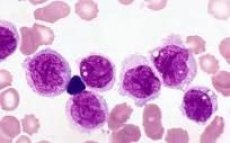Medical expert of the article
New publications
Scientists have identified a leukemia gene
Last reviewed: 30.06.2025

All iLive content is medically reviewed or fact checked to ensure as much factual accuracy as possible.
We have strict sourcing guidelines and only link to reputable media sites, academic research institutions and, whenever possible, medically peer reviewed studies. Note that the numbers in parentheses ([1], [2], etc.) are clickable links to these studies.
If you feel that any of our content is inaccurate, out-of-date, or otherwise questionable, please select it and press Ctrl + Enter.

The likelihood of developing leukemia or myelodysplastic syndromes can be predicted by the presence or absence of mutations in the GATA2 gene.
An international team of researchers from Australia, the United States and Canada reports that they have found a mutation that may be the cause of hereditary acute myeloid leukemia and myelodysplastic syndromes. The scientists published a report on their work in the journal Nature Genetics.
Myelodysplastic syndromes are the inability of the bone marrow to produce a sufficient number of normal blood cells of one type or another (either there are few cells, or they perform their function poorly, or both). Patients suffer from anemia and need constant replenishment of blood cells with the help of donor blood. In every third case, myelodysplastic syndrome turns into acute myeloid leukemia, when the bone marrow begins to intensively produce abnormal blood cells, and these gradually displace healthy ones.
The first hypothesis about the hereditary nature of these diseases appeared in the early 1990s, when it was noticed that members of one family had both myelodysplastic syndrome and myeloid leukemia, complicated by low resistance to bacterial infections. It took molecular geneticists 18 years to find a specific culprit; more than 20 families took part in the study.
The culprit was the GATA2 gene. In a number of families, mutations in it significantly increased the risk of leukemia; other carriers of the damaged gene were extremely susceptible to bacterial, viral and fungal infections due to a lack of normal immune cells in the blood. What adds intrigue to the results is that mutations in GATA2 also lead to lymphedema - a disruption of fluid circulation in tissues and, as a result, swelling of the extremities (elephantiasis of the legs). In addition, in some cases, disturbances in this gene cause deafness. Myelodysplastic syndromes are usually associated with the loss of a section of the chromosome with this gene: mutations in GATA2 have also been found in people with "ordinary", non-hereditary leukemia.
Two other genes had previously been suggested as causes of blood cancer. Without denying these data, the researchers tried to focus on other causes of leukemic disorders and eventually found a third - GATA2. Mutations that accompany other types of cancer, such as breast cancer, are easy to detect, but finding similar mutations in the case of oncological blood diseases is extremely difficult, and today there is very little information about their genetic factors. Which is especially inopportune, given the high prevalence of leukemia.
Researchers have yet to figure out how a single gene disorder can lead to such a wide range of symptoms, from bone marrow problems to deafness. However, doctors can now reliably predict the likelihood of developing leukemia based on the presence or absence of this type of genetic mutation in a family member.


 [
[